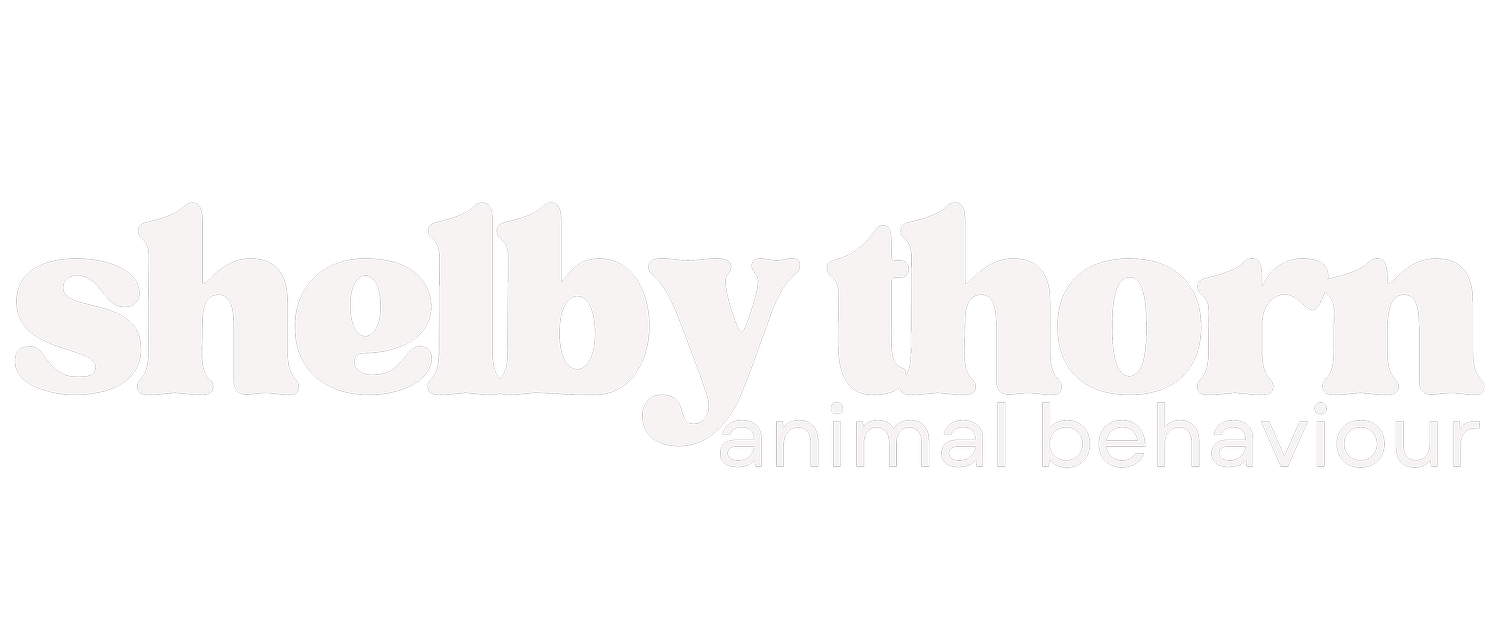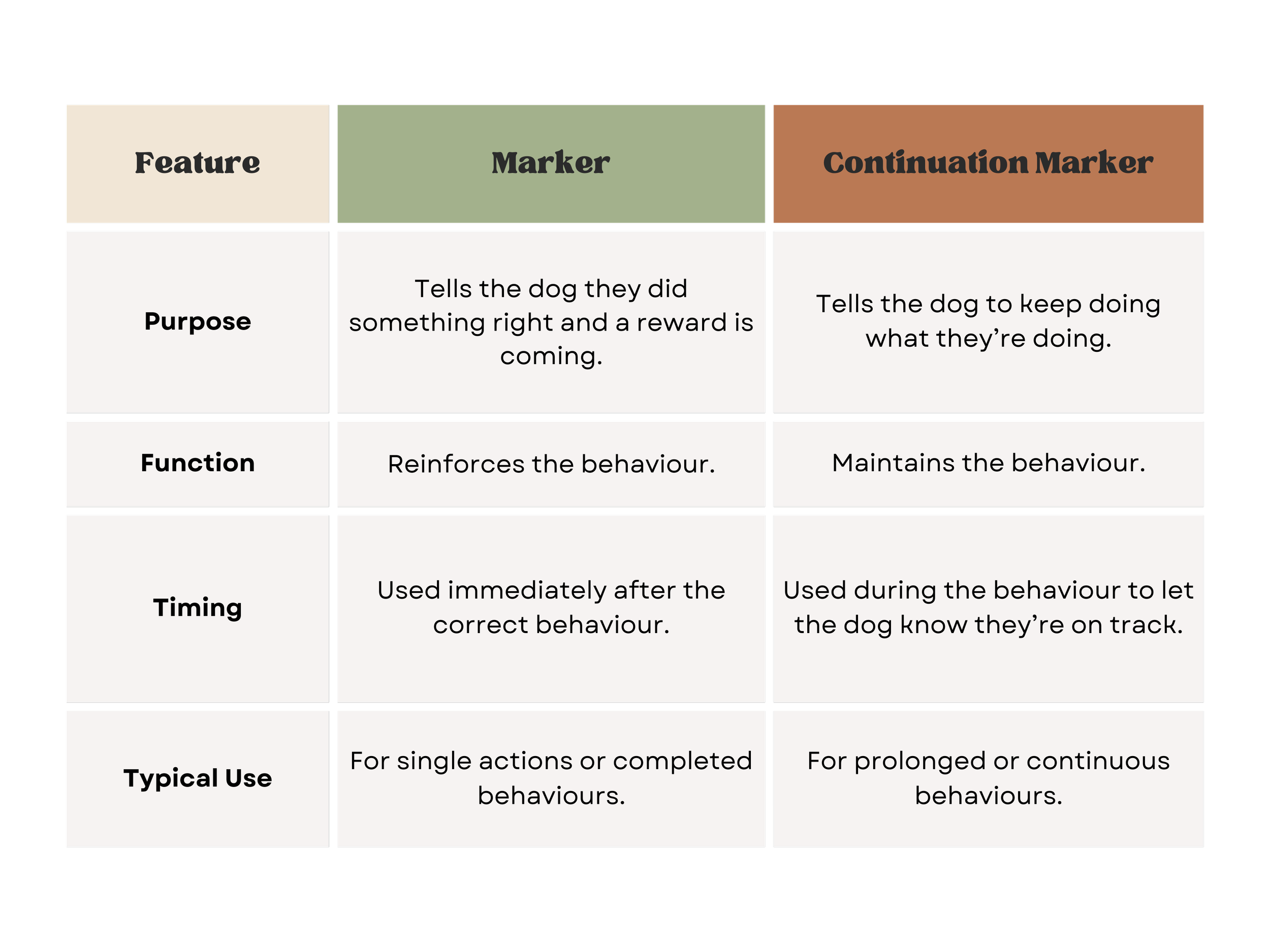Different Markers and Their Role in Training
When you’re training your dog, it's essential to understand the power of markers—those verbal cues or sounds that help communicate expectation to your pet. But not all markers are created equal! In fact, there are two main types of markers you’ll encounter in pet training: the marker (often tied to classical conditioning) and the continuation marker. Though both serve to guide your pet’s learning, they each have distinct purposes and can be used to fine-tune your training.
What is a Marker?
In the world of pet training, a marker is a cue that tells your dog that they’ve done something desirable, and they’re about to receive a reward. Typically, this is tied to classical conditioning. Classical conditioning is when a neutral stimulus (like a sound such as a clicker or word such as ‘Yes!’) becomes associated with a reinforcer such as food or play. Over time, the dog learns to predict that the sound will be followed by something pleasant—usually a treat or a toy.
The most common marker is the clicker or a word like “Yes!”. When your dog hears the marker, they know they’ve done something right, and a reward will follow shortly.
Example: Let’s say you’re training your dog to sit. When your dog’s bottom hits the ground, you immediately click a clicker or say “Yes!” and then reward them with a treat. The sound of the clicker or your voice signals that the behaviour was correct, and the treat reinforces that behaviour. Over time, your dog will begin to associate the marker with a job well done.
What is a Continuation Marker?
Now, let’s talk about the continuation marker—a bit of a twist on the traditional marker. While a regular marker signals that a behaviour is correct and a reward is coming, a continuation marker indicates that the dog is still on the right track and that they should continue the behaviour. It’s like saying, “Great job! Keep going, you’re doing it!”
A continuation marker is often used in more complex training scenarios, where you need to encourage the dog to maintain a behaviour or action for a longer period of time or through multiple steps.
Example: Let’s say you’re teaching your dog to stay in a sit position for a longer period. Instead of marking the sit and rewarding immediately, you can use a continuation marker like “Good!” or “Nice!” every few seconds to let them know they’re still doing the right thing and to keep holding that position until the final release cue.
Key Takeaway: A continuation marker keeps the dog in the game by telling them to keep going and reinforces that they’re still on track. It’s useful for behaviours that require duration or are multi-step.
Key Differences Between a Marker and a Continuation Marker
When to Use Each Marker
Both markers are important, but knowing when and how to use them will make your training more effective.
Use a Marker for Instant Reinforcement: If you want to reward a behaviour that’s finished—like your dog sitting, laying down, or shaking paws—use a regular marker. The dog knows they’ve done something right, and the reward is coming quickly.
Use a Continuation Marker for Duration or Multiple Steps: If your dog is in the middle of a behaviour (like holding a stay or performing a complex trick), you’ll need a continuation marker. It reinforces that they are still on the right path and encourages them to keep the behaviour going.
Markers are a powerful tool in dog training because they help your dog understand what they’re doing right, and the same goes for continuation markers. The key to success is knowing when to use each one, depending on the situation and the type of behaviour you want to reinforce. By incorporating both markers into your training, you’ll be able to communicate more clearly with your dog, and your training will become more effective and efficient.
Happy training, and remember: with the right markers, your dog will be learning faster than you can say "sit!"

